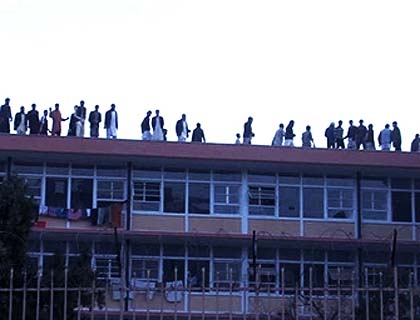The past decade has brought significant political and religious freedom to the long-suppressed Shia minority in Afghanistan who make about 25 percent of the population. Capital Kabul is a symbol of the change with full public display of religious rituals by Shias during the first ten days of Muharram, first month of the Islamic calendar, when Imam Hussain, Prophet Muhammad’s grandson was martyred in 7th century by the then Caliph Yazid.
Historically, Afghanistan has been socially a pluralistic religious society, where politics and conflicts have been ideological and ethnic, rather than sectarian. However, it is not due to a non-sectarian society, but lack of religious and political freedom. In late 19th century, the then King Abdur Rehman Khan launched a war against Hazaras, who make Afghanistan’s third largest ethnic group and most of the Shia population. He gathered an army of tribal volunteers from today’s Af-Pak border region on sectarian slogans through a Fatwa by his royal Ulema declaring Shias infidel.
Hundreds of thousands were killed and others forced to abandon their villages and take refuge in neighboring countries. Abdur Rehman also launched a war against the non-Muslim Kalash ethnic people living in today’s Nooristan province, forcing them to convert to Islam en masse and imposing an official ethnonym Nooristani.
The second time in Afghan history we witnessed widespread bloodshed on ethno-sectarian basis was during the Taliban rule, who had not only banned Ashura processions—a main religious event observed by Shia Muslims—but also killed thousands of Hazaras in systematic and targeted massacre. In his notorious speech in Mazar in October 1998, Taliban leader Mullah Manan Niazi warned the Hazaras to either convert to Hanafi Sunnism or face the consequences. Following that infamous sermon, thousands were killed in a few days in Mazar. However, current insurgency has avoided sectarian attacks.
During the decade of American presence in Afghanistan, there have been few minor incidents of violent sectarian clashes. In February 2006, five people were killed and several injured in Herat province when a clash erupted between Sunnis and Shias while an Ashura procession was passing through the city. In following riots, some Shia mosques were set on fire and several beaten to near-death.
Then we saw last year’s first-of-its-kind suicide attack on an Ashura procession in Kabul, killing about 80 people. A Pakistan-based anti-Shia banned militant outfit Lashkar-e-Jhangvi Al-Almi, involved in attacks on Shias in that country, claimed responsibility.
Due to that attack, this year’s Muharram commemorations were observed under fear of terrorist attacks, which passed peacefully thanks to the high-alert security arrangements by the Afghan National Security Forces. Suicide bombers having intentions to target Ashura gathering were arrested two days before the event.
However, what went underreported in Afghanistan as a minor incident was a clash at the Kabul University on eve of Ashura in which one was killed and dozens injured. Local and foreign media outlets reported the surface picture of a quarrel between some Sunni and Shia students over the issue of observing Ashura at the university’s dormitory mosque, shaping an ill-informed divided public opinion, at its best display on social media taking a slightly sectarian turn among ordinary Afghans both Sunni and Shia blaming the student groups, while the secular intellectual and elite class criticizing the rational that why a religious ceremony like Ashura should be held at a university.
Talking to different sources from among students at the University, the bottom-line for me is that it was not a minor sectarian confrontation among students. What has gone unreported in media is involvement of some radical elements with links to Hizb-ut-Tahrir known as the Salafi group in the dormitory building.
The incident also shows utter failure of concerned authorities in dealing with Saturday’s clash, apart from the fact that seeds of neo-salafism are being sown in universities across the country. Minister of Higher Education had come to the scene after initial skirmish, when some radicals had tried to stop Shia students from entering the dormitory mosque.
The Minister spoke to students in the mosque, but left the issue unresolved amid emotionally high sloganeering from both sides, and then police dispersed them. The confrontation resumed in dormitory building, when both sides started pelting stones. Later in the evening, two Hazara students were thrown out of window from 4th floor. Muhammad Ismail died, while Zia was severely injured with his both legs broken. Zia, father of two, now lying in a hospital, says he was not even involved in the clash.
As usual, some MPs without bothering to demand official investigation, have blamed “foreign hand” in the incident. The Government needs to conduct a thorough investigation by the National Directorate of Security. Rise of Salafist groups spreading radicalism needs to be controlled with stern action. Both Shia and Sunni Ulema in Kabul need to pay serious attention towards the increasing sectarian sensitivities among ordinary people by the public display of religious commemorations. The Government should also ban religio-political events and activities at educational institutions.

